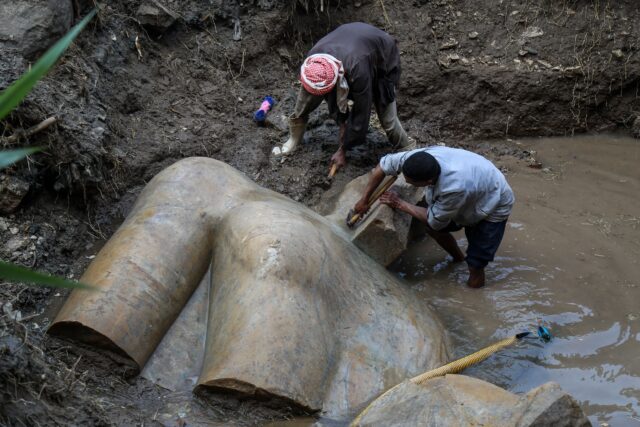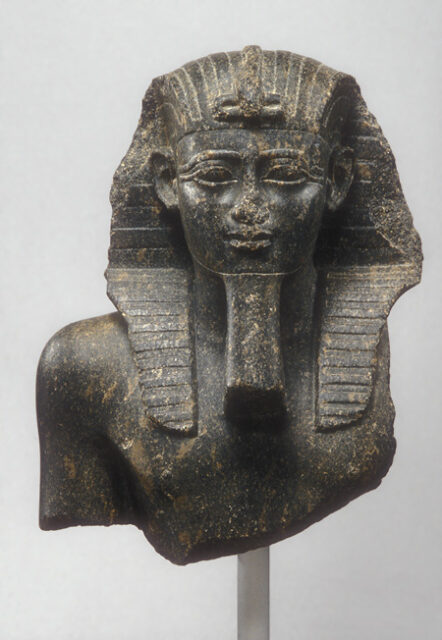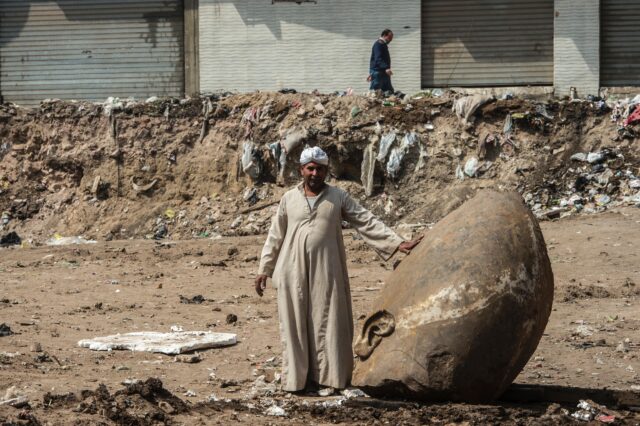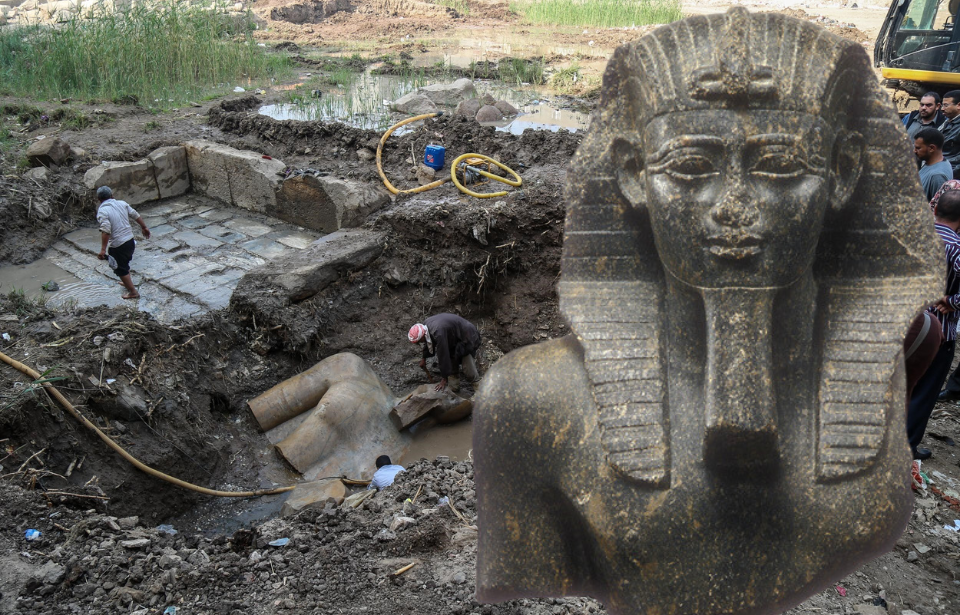In 2017, archaeologists working under challenging conditions unearthed an ancient statue buried in mud in a district of Cairo, Egypt. The massive statue was initially believed to be a depiction of one of the country’s most famous pharaohs. However, it may instead represent a ruler from the Late Period, which would make it the largest statue from this period of Egyptian history.
An important discovery
The discovery was made by a joint German-Egyptian research team. These archaeologists were working at what was once the ancient city of Heliopolis, now the El Matarey district in eastern Cairo. The area, known for its unfinished buildings and mud roads, presented a rather inhospitable working environment. Despite the conditions, the researchers found a 3,000-year-old, eight-meter (26-foot) quartzite statue beneath the water level, buried in mud.

They first discovered the bust of the statue as well as the lower part of the head. Once those had been removed, they found the crown, and other facial features followed. The statue was soon believed to be a depiction of Ramses II. Its discovery in Heliopolis, where Ramses II founded a sun temple, led researchers to feel fairly certain it was indeed a statue of the ruler.
Dietrich Raue, head of the German team, told Reuters that ancient Egyptians believed Heliopolis was where the sun god lived. This meant that no royal residence was ever built there. He said, “The sun god created the world in Heliopolis, in Matariya. That’s what I always tell the people here when they say, is there anything important? According to the pharaonic belief, the world was created in Matariya.”
Raue further explained, “That means everything had to be built here. Statues, temples, obelisks, everything. But… the king never lived in Matariya because it was the sun god living here.” Thus, it seemed likely that the statue would be of Ramses II. However, further research showed that it was, in fact, a statue of Psammetichus I.
The key to the statue’s ‘identity’ was the inscription of the word ‘Nebaa.’ Nebaa was a name given to Psammetichus I, the only pharaoh to carry this moniker. This led researchers to feel confident that the statue depicts the pharaoh from the 26th dynasty. Anani has confirmed, however, that it’ll take longer for researchers to be absolutely certain.
Psammetichus I
Psammetichus I, also known as Psamtik I or Psammetichus the Great, ruled Egypt from 664 to 610 BCE and was the first pharaoh of the 26th dynasty, also known as the Saite Period. His reign marked a turning point in Egyptian history, as it ushered in a period of autonomy after years of Assyrian domination.

Psammetichus I came to power at a time when Egypt had been under the control of the Assyrian Empire for several decades. He capitalized on the political instability caused by the decline of Assyrian power to assert Egyptian independence and restore the country’s former glory. This was accomplished, in part, by embarking on various military campaigns to secure Egypt’s borders and expand its influence.
Psammetichus I’s reign brought about a period of prosperity, independence, and cultural revival in ancient Egypt. He laid the foundation for a new era of Egyptian history, known as the Late Period, which lasted until the conquest of Egypt by Alexander the Great in 332 BCE.
A challenging work environment
In a Facebook post, Khaled al-Anani, the Egyptian antiquities minister, called the statue “one of the most important archaeological discoveries.” Egyptologist Khaled Nabil Osman echoed the sentiment, saying that the discovery of the statue was an “impressive find.” He continued by stating that Haliopolis “was the main cultural place of ancient Egypt, even the bible mentions it.”
Osman also remarked on the area’s currently poor condition. “The sad news is that the whole area needs to be cleaned up, the sewers and marked should be moved,” he said.

Raue also discussed this. “Today, the site is seriously threatened by new construction and a rapidly rising water table,” he said. “Eight meters of domestic and industrial waste as well as building rubble, have been dumped on the site in the past four years. Added to this bleak scenario is the fact that the level of the water table on the site has risen alarmingly and continues to do so.”
ARCE (The American Research Center in Egypt) wrote that the area is a “most challenging environment” for archaeologists, but that didn’t stop researchers from making this important discovery.
It was reported that the statue of Psammetich I, after its removal from the ground and a much-needed restoration, would be placed at the entrance of the Grand Egyptian Museum, initially set to open in 2018. The museum, which will house the single largest collection of antiquities in the world, will open by the end of 2023.
More from us: The Archaeologist Who Discovered King Tut’s Tomb May Have Stolen His Treasure After All
It is the hope of the Egyptian government that the display of this statue and the grand opening of the Grand Egyptian Museum will attract tourists to the country.
Let us know what you think in the comments below.
